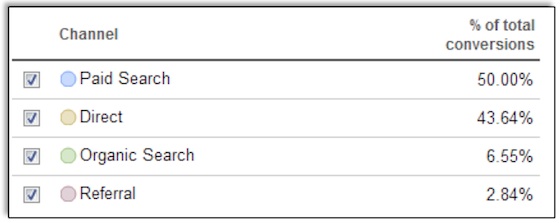Are View-Through Conversions the Last Line of Defense for Banner Advertising?
Here are the issues around view-through conversions and three ways to determine if it's a valid metric for your brand.
Here are the issues around view-through conversions and three ways to determine if it's a valid metric for your brand.
Banner advertising is one of the earliest forms of digital marketing and an integral part of everyone’s media mix. However, with the rise of social media and high impact pre-roll ads, marketers have seriously begun to question the effectiveness of banner ads. Especially with stats like the following:
1. CTR of banner ads are astonishing low with averages round just 0.1 percent (DoubleClick).
2. You’re more likely to survive a plane crash than click a banner ad (Solve Media).
From a measurement perspective, we as an industry came up with different methodologies in quantifying the effectiveness of display advertising. The first paradigm shift was the gradual move away from pure “last click” conversion into different attribution models. This shift finally gave display advertising its due credit when compared to high “last click” conversion channels like search. However, what happens when your analytics attribution channels look like the following?

In this case, consumers didn’t even click on the banner ad so we can’t see any of their contributions through multi-channel attribution.
But what about the “billboard effect” of banner ads? Even though we didn’t click on the ad, maybe it served as a reminder and kept the brand top of mind. This led to the birth of view-through conversions, which is defined as: the number of ad exposures on the path to conversion, where the final conversion channel is usually lower funnel tactics like PPC.
Ever since the birth of the view-through, there have been numerous discussions on the true validity of this metric. While some have even pointed out this metric’s whole existence merely serves as a justification for continued banner ad media investments.
So are view-through conversions the last line of defense for banner advertising? Let me highlight the key arguments below:
1. One of the first arguments against view-throughs is on the billboard effect. Just because the consumers were exposed to the ad, it doesn’t mean that it affected their decisions on a later date conversion. In essence, this is similar to a traditional outdoor advertising. On digital, we can track ad exposure prior to conversion through another channel but there’s no direct causal effect.
2. Another important point is on the view-ability of banner ads. We’re all aware the increasing usage of viewable impressions in ad tech. This is even more important in gauging view-through conversions because if the ad was served below the fold then it shouldn’t count as an exposure, and definitely shouldn’t get any attribution credit.
3. Backtrack duration is the third point of concern for many marketers. If a consumer was exposed to a banner ad 30 days prior to conversion, should this still count as view-through? For some B2B industries where the procurement cycle is long, this may be arguable. But for fast moving industries like online travel, backtrack duration should be no longer than 24 hours.
4. The biggest criticism against view-through conversions recently is the application of the metric in DSP buying. A lot of DSPs (demand-side platform) on the market will group view-through conversions along with actual conversions like filling out a leads form. This shady tactic allows them to promise a CPA model to the client and fulfill it through many duplicated view-through conversions.
5. Another shady tactic used by DSPs is cookie stuffing. Because view-through conversions are measured in ad exposures, most DSPs will show large amount of view-through conversions on the path to conversion. Some will even intentionally spread budget across as many sites as possible, this is known as cookie stuffing. Since DSP buying is innately spread across various different media channels, it doesn’t prove that the impression served have any direct linkage to the final conversion.
With all these issues around view-through conversions, how do we determine if it is a valid metric for our brand? Below are three things you can do to test the validity of this metric:
1. Run an A/B test campaign, show one group the banner creative while showing another group a PSA ad. Then measure the incremental conversions of the group that was shown the banner creative.
2. Always ask for view-through conversions to be reported separately from last click conversions, only then you can get visibility into the actual conversion breakdown.
3. Set custom backtrack durations for view-through look ups based on industry conversion duration norms. Don’t accept view-through conversions that were counted outside the set conversion duration.
In conclusion, view-through conversions are an additional metric that we can use to gauge the effectiveness of our display campaigns. But it must be measured in a fair and methodical manner, only then can it be used with credibility.